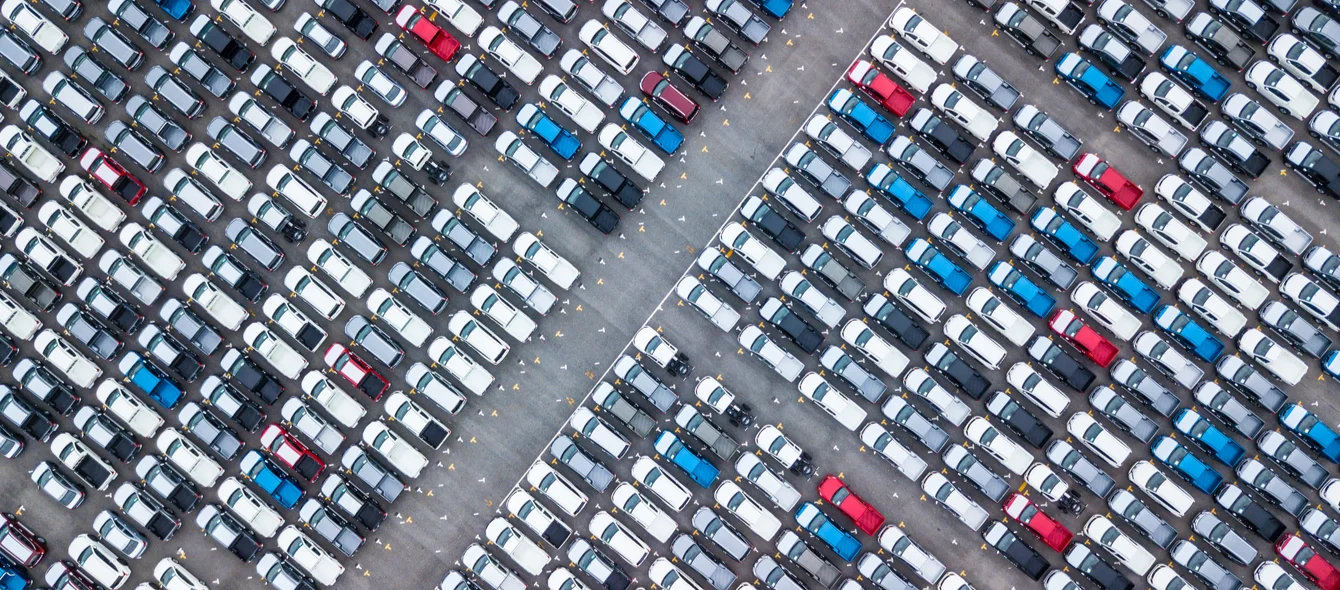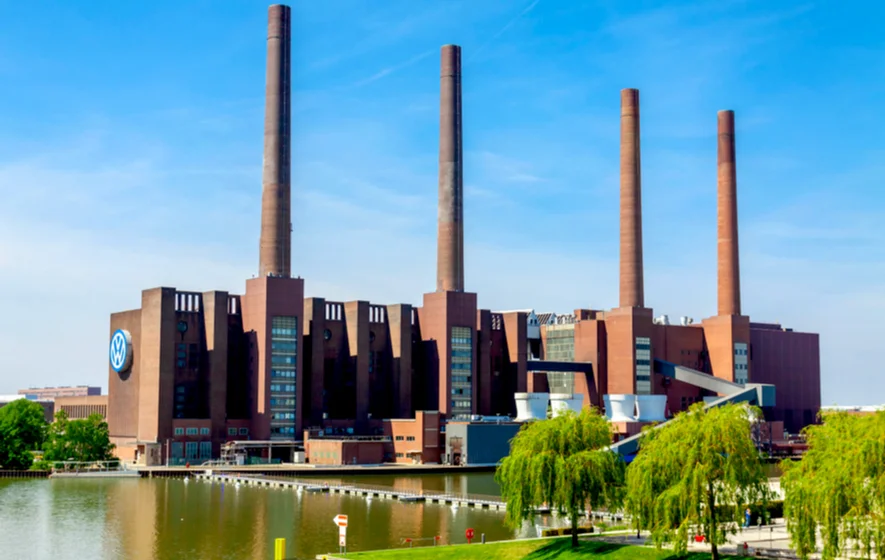The global players of the automotive industry have set their sights on preventing climate change. Although the production and development of electric cars and new batteries is already well under way, there is more to be done than just gearing up for e-mobility. In fact, it is the production facilities of the car manufacturers themselves that are known power-guzzling culprits. Thanks to the corona crisis, energy consumption has spiralled since numerous manufacturers have shut down large parts of their production networks. Slowly, however, these facilities are coming back to life. In the fourth part of the ‘Economy & Renewables’ series, en:former will be taking a look at what car companies are doing to foster a more climate-friendly manufacturing approach and how renewable energy is factoring into this new way of working.
The Volkswagen plant in Wolfsburg is the largest manufacturing plant in the world, spanning an astounding 6.5 million square meters. The factory halls alone occupy an area as large as the entire Principality of Monaco. Not surprisingly, a great deal of electricity and heat is needed to keep this huge plant up and running. In 2019, the site consumed just under 1.9 million megawatt hours – comparable to the annual power consumption of a city with 250,000 inhabitants such as Wiesbaden or Mönchengladbach.
The group runs two of its own power plants in Wolfsburg to supply this energy. Until recently they burned coal but have since begun the transition to natural gas. With these new gas turbines, from 2022 onwards, it will be possible to reduce carbon emissions by around 1.5 million metric tons every year. This is as much carbon dioxide as 870,000 vehicles emit annually and equates to a reduction of almost 60 percent compared to previous emission levels.
Although this is a good way of operating more climate-friendly factories in the short term, other, longer-term solutions will still be necessary moving forward. After all, VW, along with a number of other major automotive groups, has set its sights on zero-emissions manufacturing by 2050. But how do they intend to achieve this, given the considerable amounts of energy needed for production? en:former has taken a closer look.
70 percent of the electricity for VW factories from renewables
As it stands, 70 percent of the power needed by the 16 Volkswagen plants dotted around the world comes from renewables. Predominantly, this electricity is sourced from the grid, from a single supplier, although the aim is to increase this figure to 90 percent within the next year.
An increasingly popular means of obtaining electricity from renewable sources are long-term electricity supply contracts, also known as PPAs – power purchase agreements. In Mexico in 2014, for example, VW concluded one such agreement under which the group secured the power generation of a 130-megawatt wind farm for the next 20 years. Moving forward, VW is planning on increasing the number of these long-term agreements across Europe.
Then there is the green electricity that is being generated on the production sites themselves. At the VW plant in Emden, for example, an electricity cooperative was implemented in 2008, which saw the workforce take a financial stake in a photovoltaic system located on the roof of a factory building. This 6,500 square metre PV system supplies as much electricity every year as 70 typical three-person households consume annually.
Daimler as a pioneer in Europe
Daimler, too, has installed many photovoltaic systems across its factory sites. One such plant, located in Sindelfingen, is due to open soon. Known as Factory 56, the site will include a roof-mounted photovoltaic system, which will feed 5,000 megawatt hours of electricity into the factory every year. Although this is less than one percent of the energy required for the Sindelfingen site, it is a start. Thanks to agreements with utilities, Factory 56 will also be supplied with carbon-neutral energy upon commissioning.
From 2022, all Daimler AG locations in Germany will source 100 percent of their power from renewables. This means Daimler will soon be a pioneer in Europe in this arena. A cross-location electricity contract with energy utilities is set to ensure that the company’s requirements are covered in full and at all times by wind, solar and hydroelectric power.
The group has also turned to PPAs to achieve this. In Poland, Dresden-based wind farm developer VSB has been supplying power to a Daimler engine plant using 22 wind turbines in order to exclusively generate electricity for the factory. The PPA between Daimler and VSB was one of the first of its kind in the European automotive industry. In Germany, too, Mercedes-Benz AG will soon be sourcing electricity from German wind farms, the subsidies for which expire after 2020 under the German Renewable Energy Act (EEG). Therefore, Mercedes-Benz AG is the first major industrial customer to ensure the long-term operation of six wind farms in northern Germany.
Wind and sun for General Motors
If we take a look across the pond, US-based General Motors (GM) is one of the biggest consumers of renewable electricity. GM has also committed itself to exclusively using sun, wind or landfill gas to power its 350 sites around the world by 2050. To this end, the US automotive group is securing renewable energy through PPAs and is also generating its own solar power across 22 operating sites.
The GM plant in Zaragoza, Spain, has been using solar energy since 2008, for example. The roofs of the car factory have been fitted with around 85,000 solar modules, and in 2012 a roof-mounted photovoltaic system was installed at the Opel factory in Rüsselsheim as well. Together, the two PV systems generate 19,000 megawatt hours of solar power annually. Other GM sites rely on landfill gas or wind energy.
Honda concludes long-term power purchase agreement for renewables
Japanese manufacturer Honda doesn’t simply build cars and motorcycles. It also produces robots and aircraft in its factories across more than 30 countries. As for its North American production sites, the company is planning on reducing greenhouse gas emissions by 60 percent, thereby offsetting 800,000 metric tons of carbon dioxide emissions every year.
To make this possible, Honda has concluded numerous PPAs, which, according to media reports, constitutes the “biggest” wind and solar power deal the industry has ever seen and comprises a total capacity of 320 MW. A power purchase agreement with RWE Renewables was also included, awarding Honda the electricity from an RWE Renewables wind farm in Oklahoma, which is currently under construction.
Things are happening in the sector
The examples shown indicate that automobile manufacturers are actively making moves to meet their climate targets. Switching to renewable energy allows car companies to benefit two-fold: by actively supporting the energy transition, they can improve their brand image whilst also saving themselves a pretty penny.
Photo credit: shutterstock.com, Avigator Fortuner

